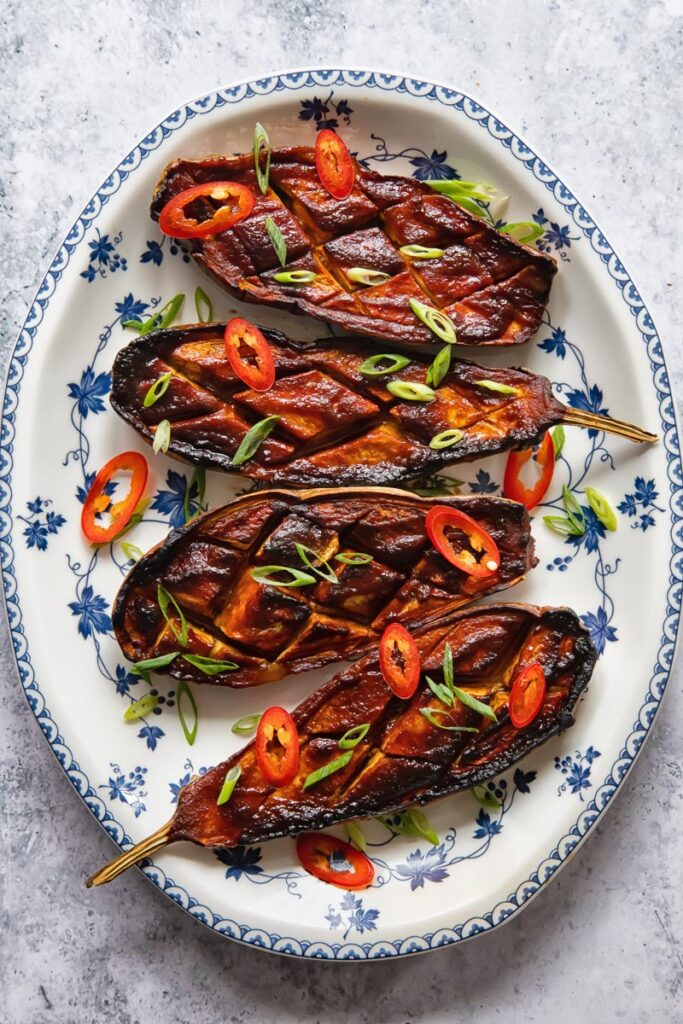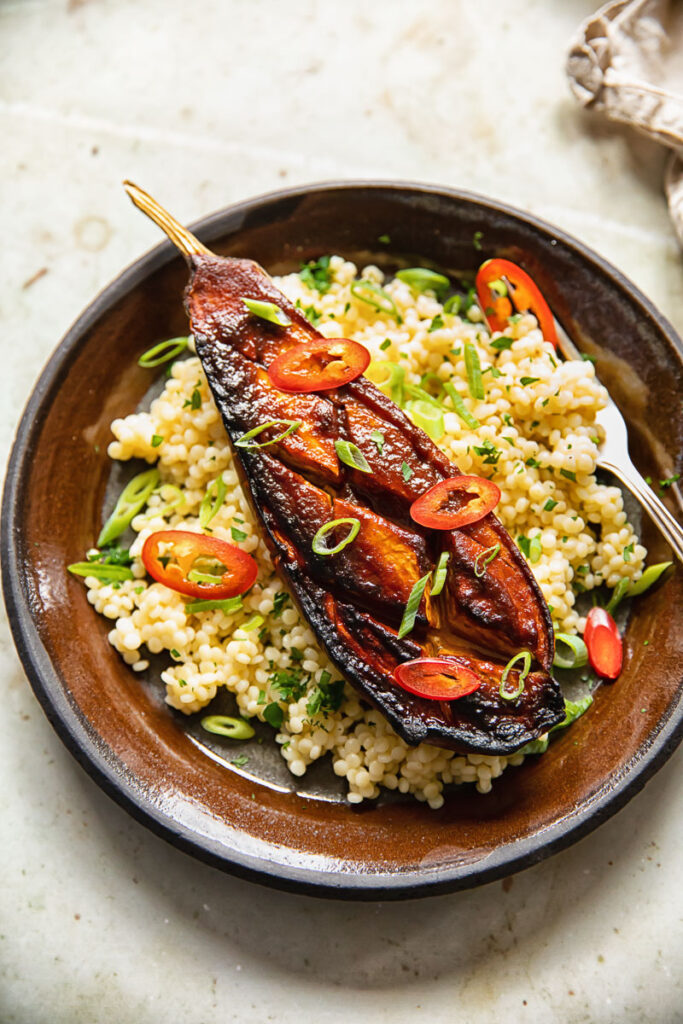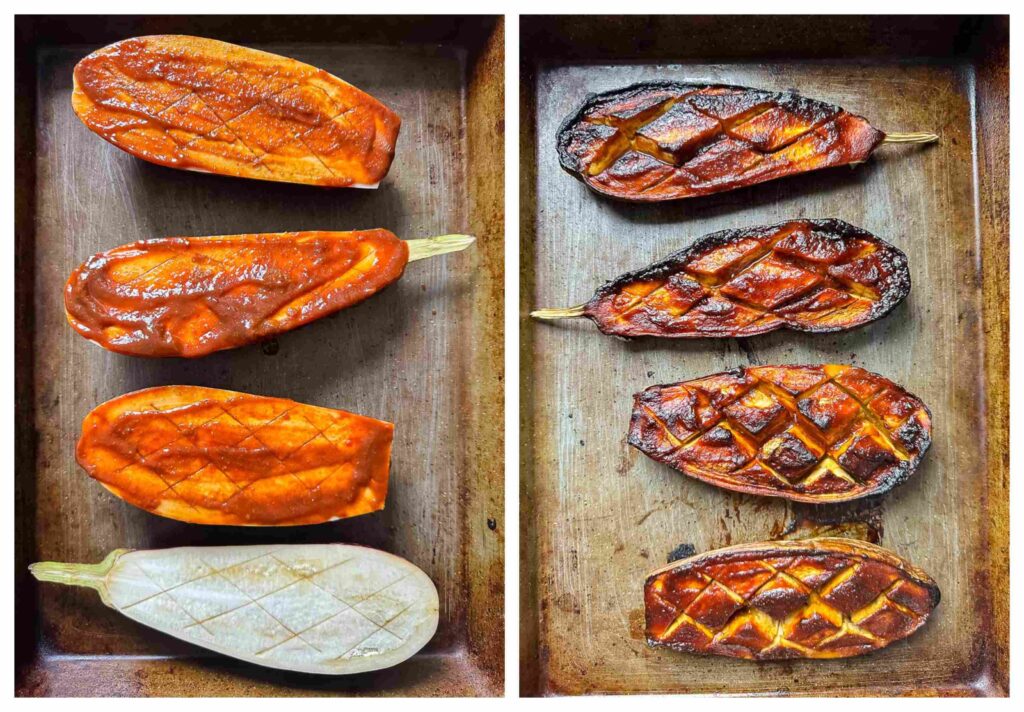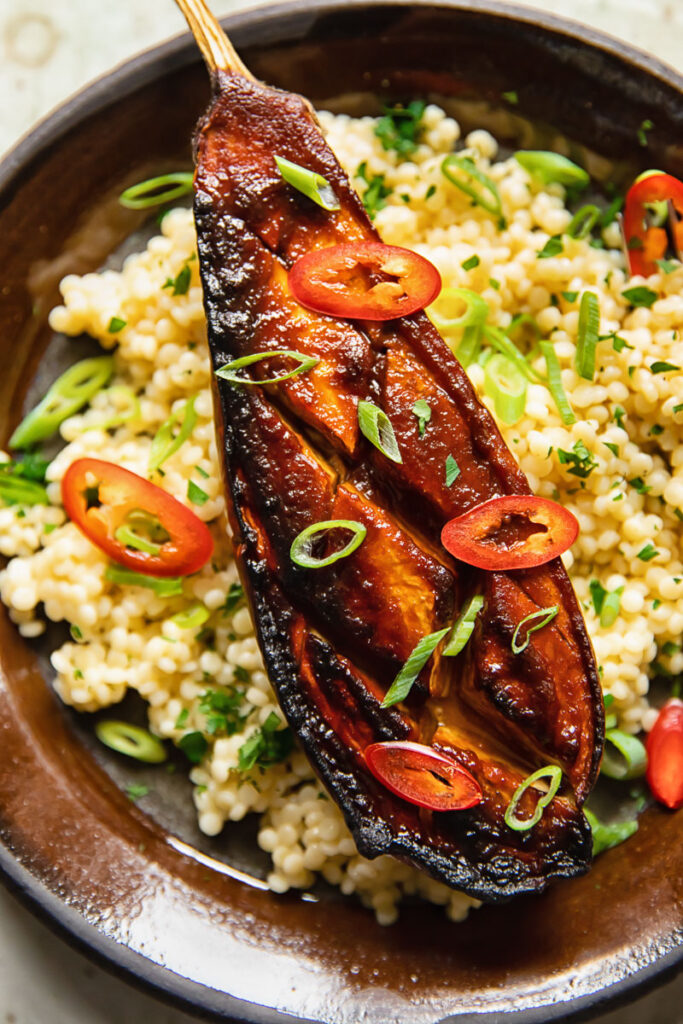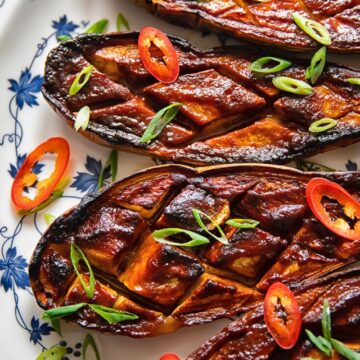For more than a meal, serve with quick and easy beef yakisoba for a Japanese inspired banquet. A thoroughly roasted aubergine is surprisingly silky and creamy. And a sticky miso roast aubergine is like no other aubergine recipe out there. There are so many flavours and textures ready to burst out of its dark purple skin. You just can’t argue with centuries of East Asian cooking.
Glazed aubergine
Known as Nasu Dengaku, the traditional Japanese method calls for flame-roasting aubergines over an open fire. The result would be a crisp, charred and smoky skin that cupped the silky flesh inside. However, fire cooking is a refined skill that takes years of practise, as any barbecue enthusiast will tell you. And besides, where I live, we don’t really have the weather for it. My method is definitely more lo-fi and hands-off: just a few minutes to prep your glaze and score the aubergines, then slide them into a 21st century oven. Then you can sit back and contemplate the sound of one hand clapping. As well as being more risk averse, oven-roasting your aubergine yields a slightly different flavour. Where a char tastes bitter and burnt, a gentle roast will just catch edges and caramelise. The result is a glaze that is sweet, almost sticky toffee flavour, that doesn’t overwhelm the miso-infused aubergine flesh.
What miso to use
The expansive world of miso is a confusing and complex place, there are literally hundreds of different types with tones ranging from mellow and mild to pungent and funky. A lot like coffee or wine. Here are some of the varieties readily available in stores outside East Asia, what they taste like and when to use them:
White miso (aka shiro) which has a high white rice content. It’s mild and mellow, due to the shortest fermentation time of all misos. Your go-to for soups, salad dressings and sweeter marinades.
Yellow miso (aka shinshu) has added white rice or barley. It’s semi-sweet and earthy and used in both savoury and sweet dishes. It’s slight saltiness gives an edge to chocolate brownies or ice-cream recipes.
Red miso (aka aka) has a higher ratio of soybeans to rice. It’s salty and tangy, so most often used in dark sauces and marinades.
Brown miso (aka mame) is made with brown rice. It’s profound and complex, and is fermented the longest (at least two years) in wooden barrels. The most intense of all of the above!
Are we all miso masters now?
Serving suggestions
I could quite contentedly eat a whole roast aubergine as a main meal. I like mine with white rice delicately flavoured with a little ginger and spring onion and a side of sautéed Chinese greens overtop a bed of rice. Or you could serve it with a flavourful noodle salad. For something more hearty, a crispy chicken katsu curry is the perfect partner. The crunchy chicken contrasts the silky smooth aubergine giving you the best of both texture worlds.
Storage and leftovers
Any leftover glazed aubergine can be covered and stored in the fridge for 2-3 days. The aubergine will continue to marinate over that time so it will taste even richer. To reheat, return it to a preheated oven for 10 minutes or until warm all the way through.
